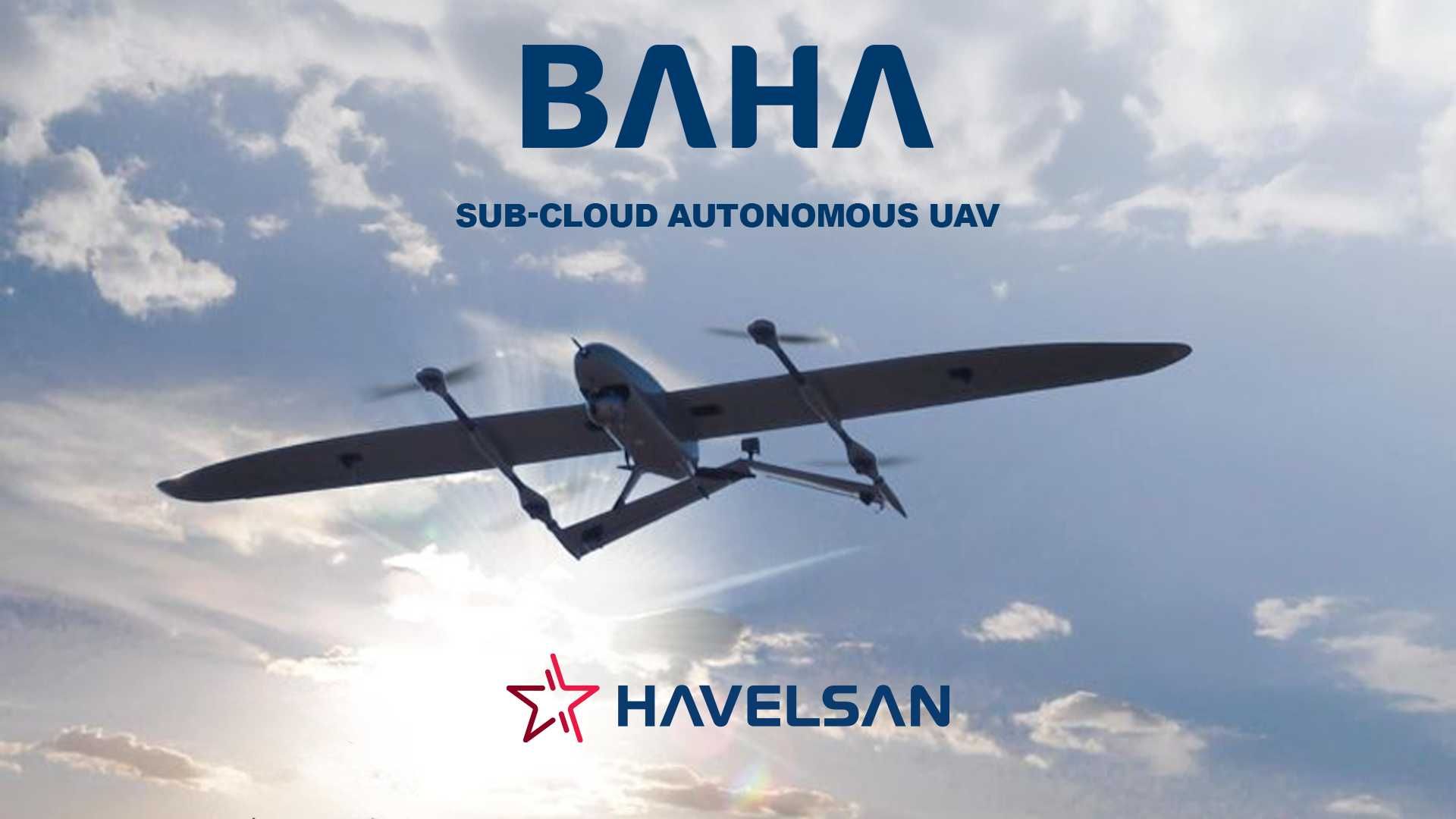Breaking News
Türkiye officially deploys Havelsan's BAHA UAV to strengthen reconnaissance and joint unmanned operations.
On April 25, 2025, the Turkish company Havelsan announced that the Sub-Cloud Unmanned Aerial Vehicle (UAV) BAHA has been officially inducted by the Turkish Ministry of National Defense into the inventory of the Turkish Armed Forces. The system, which was procured in various quantities by the Land Forces Command, has completed its inspection and acceptance procedures. BAHA was developed by the Turkish defense company HAVELSAN and first entered into the inventory in 2024.
Follow Army Recognition on Google News at this link

By early October 2021, Havelsan's BAHA UAV had completed a flight test at an altitude of 7,500 feet and at a distance of 10 kilometers from its Ground Support Center. (Picture source: Havelsan)
During a weekly press briefing, Rear Admiral Zeki Aktürk stated that inspection and acceptance procedures for BAHA had been completed and that the system had been officially added to the Land Forces Command's inventory. He noted that the Turkish Armed Forces continue to expand their capabilities through domestically developed systems. The BAHA platform is positioned to play a role in both independent and integrated unmanned system operations under the Ministry of Defense’s modernization efforts.
The BAHA program, an acronym for Bulut Altı İnsansız Hava Aracı (Sub-Cloud Unmanned Aerial Vehicle), is part of Türkiye’s broader unmanned systems development effort initiated under the “Digital Troops” concept, first proposed in 2021. The project follows the earlier integration of BARKAN, the first unmanned ground vehicle (UGV) developed for this initiative. BAHA’s entry into service further extends the scope of this effort by incorporating airborne autonomous capabilities. Its role is intended to support reconnaissance, surveillance, and intelligence tasks under varying environmental conditions and operational scenarios. It is categorized as a sub-cloud UAV and is designed to operate below cloud level where larger systems may be less effective.
The BAHA UAV was introduced publicly during the International Anatolian Eagle 2021 Exercise held at the 3rd Main Jet Base Command in Konya. By early October 2021, it had completed a flight test at an altitude of 7,500 feet and at a distance of 10 kilometers from its Ground Support Center. The platform underwent redesign in 2022 to address operational feedback from military users, resulting in modifications to its structural dimensions, payload capacity, and weight. The UAV was delivered to the Turkish Armed Forces in December 2023. On March 7, 2024, the Ministry of Defense announced its procurement of an unspecified number of BAHA UAVs for the Land Forces Command during its Weekly Press Information Meeting.
BAHA is operated from a land vehicle and uses a fixed-wing structure with vertical take-off and landing (VTOL) capability. It is equipped with a hybrid propulsion system. The electric version has an endurance of two hours, while the fuel-powered variant offers an endurance of approximately 2.5 to 6 hours, depending on the configuration. The UAV can reach a ceiling altitude of 10,000 feet, with a maximum operational altitude of 15,000 feet in some variants. The version inducted into Turkish service has a wingspan of 4 meters, a maximum take-off weight (MTOW) of 28 kg, and a payload capacity of 2 kg. It cruises at 43 knots (approximately 80 km/h), has a wind resistance limit of 25 knots, and can operate within a temperature range of -10 °C to +50 °C. The system’s data link range extends up to 50 kilometers.

The BAHA is operated from a land vehicle and uses a fixed-wing structure with vertical take-off and landing (VTOL) capability, as it is equipped with a hybrid propulsion system. (Picture source: Havelsan)
The UAV can be transported, launched, operated, and maintained by two technicians. It is designed for reconnaissance, surveillance, and intelligence-gathering operations during both day and night. It has capabilities for operating in electronically contested environments, with telemetry link redundancy and an autonomous return and landing function in the event of communication loss. The system is capable of target coordinate estimation and can integrate various mission-specific sensors. It is also designed for joint operations with other unmanned systems and supports coordinated deployment through centralized control platforms. HAVELSAN is conducting ongoing work to enable the management of 20 to 30 UAVs from a single land-based control station to support swarm or team operations.
In addition to its military applications, BAHA has been used in disaster response exercises within Türkiye. It was deployed during a rubble reconnaissance and surveillance mission as part of an earthquake response drill coordinated by AFAD, the Disaster and Emergency Management Authority. The UAV is capable of flying below clouds in adverse weather and supports image acquisition in scenarios where other aerial systems may not be able to function effectively. This has made it applicable to other tasks such as post-disaster assessment and situational awareness in inaccessible areas.
The platform has also achieved exports in multiple regions. In 2023 and 2024, BAHA was exported to customers in Africa, Central Asia, and the Middle East and North Africa (MENA) region. Among the documented export recipients is the Nigerian military. The system’s ability to perform a wide range of civil and military missions has been cited as a factor in these sales. In operational contexts, BAHA has been used for border and coastal security, detection and tracking, intelligence tasks, electronic warfare support, anti-smuggling missions, narcotic plant detection, residential thermal imaging, environmental monitoring, energy infrastructure surveillance, forest fire management, cartographic work, and agricultural observation.

Designed for joint operations with other unmanned systems, the BAHA UAV is capable of target coordinate estimation and can integrate various mission-specific sensors. (Picture source: Havelsan)


























